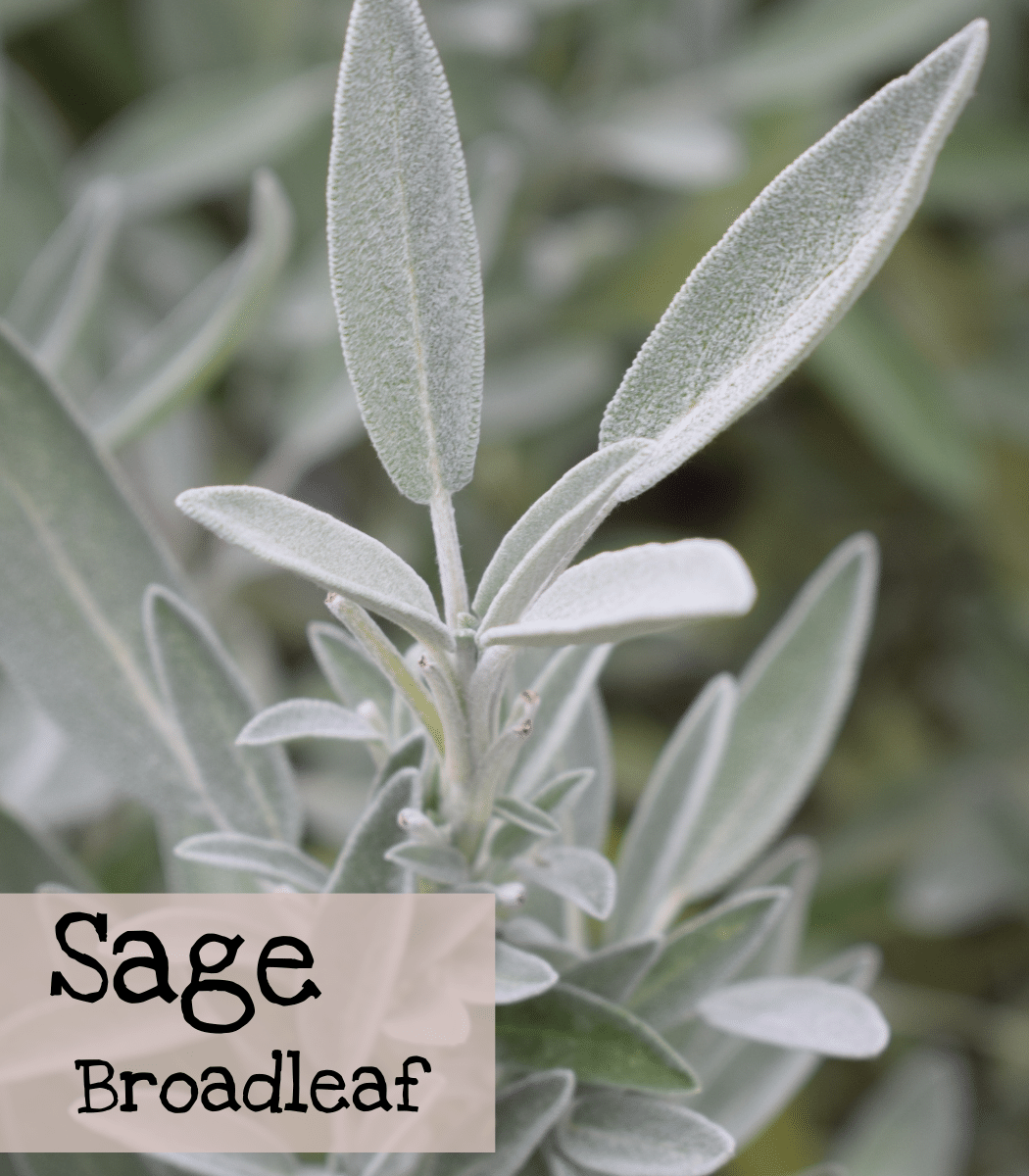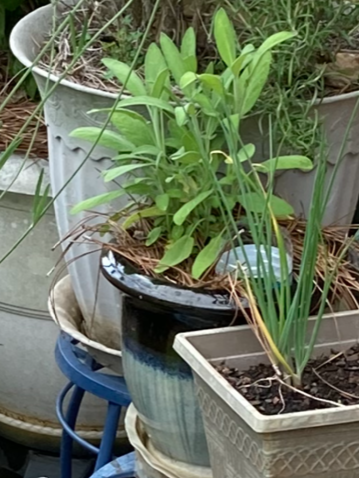
Sage
Sage brings out the flavor of poultry and is often used in sausage. It is good in soups and makes a fabulous refreshing iced tea when paired with mint!
|
Broad Leaf |
|
Salvia officinalis |
|
Easy |
|
Easy |
|
1-3 years if properly stored |
|
Perennial |
|
Soil temperatures should be between 50-80°F for the best germination 10-15 days |
|
None |
|
1/4 inch |
|
18-24” tall |
|
Full sun |
|
70-80 days |
|
March, April, and May |
|
Yes |

Growing Tips


When to Start
Spring: Start indoors about 6-8 weeks before transplanting. (Mid-Feb – Mid-Mar for Jefferson, GA)
Direct sow or transplant: after the danger of frost has passed. (May 1 for Jefferson, GA)
How to Start
Start indoors 6-8 weeks before transplanting. Transplant or direct sow after the danger of frost has passed. Sow seeds to a depth of 1/4 inch. Sage prefers well-draining soil and loves full sun beds or containers. It will tolerate drought and poor soil, but sage will produce better with consistent water. Space plants 18 to 24 inches apart
Care
At least twice during the growing season, cut 6-8″ from the top of the plants to encourage young shoots with a strong flavor and to prevent them from becoming leggy and twiggy. This will also help prevent it from flowering, which isn’t desired if using it as a culinary herb. If you do wish to save seeds, only prune one time and earlier in the growing season. The plant may not bloom in the first year, regardless of pruning.
The stems are green at first but become woody in the second year. It tends to be a short-lived perennial and is often best replaced every few years. Divide every couple of years to rejuvenate the plants.
Harvest
Pick the leaves as desired, as long as you don’t cut back more than half the plant, or it will stop producing. Harvest in the morning for peak flavor and before the plant flowers.
Sage has few pests when grown in well-drained soil. Good air circulation will reduce potential problems with foliar diseases. Do not plant next to basil. They do not get along, and one or both will die.
How to Use
Often thought about during Thanksgiving, this herb is good for more than stuffing the turkey! It is used to flavor soups like French onion, beans, sausage, and cheeses. The leaves can be fried and made into chips, and when paired with mint, it makes a refreshing sweet tea!
Sage Tea: Add 2 tablespoons of fresh leaves or 1 tablespoon of dried leaves to 1 cup of boiling water. Steep and then strain leaves. I prefer mixing sage with mint to make a refreshing, sweet iced tea. Recipe below.
Pro Tip!
Incompatibles: Cucumber and all onions
Grows well with: All brassicas (kale, broccoli, etc.), carrots, marjoram, rosemary, strawberries, and tomatoes.
My personal experience
I’ve never really enjoyed the dried herb sage. I only started to grow it so I wouldn’t have to spend so much money on it for French onion soup. It really doesn’t taste right without sage.
I discovered I really enjoy fresh sage. It has a flavor I find hard to describe. When paired with mint, it makes the most refreshing iced tea! See my recipe below.
I’ll dry it for use in my soup in the winter. Sage must loose flavor as it’s stored because my dried sage tastes so much better than what you purchase in the store!
I learned the hard way not to plant basil and sage together. I got one harvest and then it died, for no reason–other than it was planted next to basil. It now gets it’s own pot.
I treat it as an annual and start a new seedling every year. It tends to get a bit woody otherwise and my pot really isn’t big enough for a more mature plant.

Seed Saving

Isolation Distance
Insect-dependent separate by 1 mile for reliable distance isolation. Allow seeds to mature and dry on the plants before harvesting.
Instructions
Plants will typically bloom in the 2nd year. The seeds are fairly large and easy to see within the seed pod. The seeds grow in bell-shaped flowers along the sage stem. The seeds are rather large and can be seen easily in the plant. As the seeds ripen they turn darker in color. Once the seeds turn dark and the flowers turn brown, cut the flower stalk and place it upside down in a paper bag. As the seeds ripen, they will fall into the bottom of the bag.
Sage can also be reproduced by layering, division, or from stem cuttings. Layer established branches in the spring and fall, or divide large plants in the spring. Take softwood stem cuttings in summer and root in a sand-peat mixture.
Features
- Attracts pollinators and some hummingbirds
- Attractive in edges and borders
- Container friendly
- Drought tolerant
- Culinary
- Used in a wide variety of meat and vegetable dishes. Ideal for sausage and vinegars
- Broad Leaf: Used to flavor many meats, stuffings, and vinegars. Grey, green leaves. Heirloom.

DO NOT plant sage next to basil. One or both will die.
Elizabeth’s Refreshing Mint, Sage Tea
- 4-6 sprigs of mint leaves
- 2-3 sprigs of common sage leaves
- Sugar to taste (1/2 to 1 c)
- 1 gallon of water divided
Wash the mint and common sage leaves. Place in a four-cup measuring cup. Pour 4 cups of boiling water over the mint and sage leaves and let steep for 10-20 minutes or until it reaches the desired strength. Remove the mint and sage. Pour the hot tea into a pitcher. Add sugar to taste and stir until dissolved. Add the remaining cold water. Chill and serve cold.
Sources:
Sage, Slavia officinalis by Susan Mahr, University of Wisconsin – Madison hort.extension.wisc.edu
Globalseednetwork.org
The New York Botanical Garden, Herbal Handbook, Clarkson Potter.
Helmer, Jodi. Growing Your Own Tea Garden: the Guide to Growing and Harvesting Flavorful Teas in Your Backyard. Fox Chapel Publishers International Ltd., 2019.
